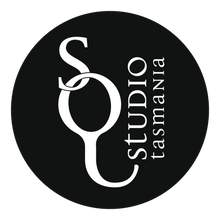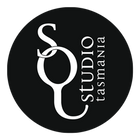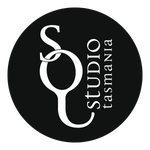When we talk about "weaving" or "woven" it seems to be a loose term that is used with little or no thought to what that actually means. So today’s blog we explore with you the organic process from fleece (sheep’s back) to finished "woven" product that "you" the consumer buys in store.
Why can we tell this yarn? Mind the pun. Our collaboration with the iconic Waverley Woollen Mills, established in 1874 the oldest textile mill in Australia still operating from its original site in Tasmania. Over 135 years, a dynasty of master weavers handed down their knowledge, skills and passion, despite modernisation, advances in technology and wool innovation, some things remain unchanged – the journey from farm to fleece, fibre to fabric remains an organic hands-on tradition.

Images by Tamika Bannister on location at Waverley Woollen Mills

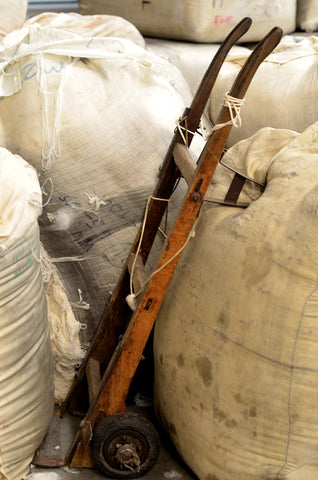
To say it was love at first visit to this iconic site was no understatement and the rest; well you could say is history! The wool comes literally from the sheep’s back, shorn by hand by Australian merino farmers it arrives to the weaving mill in big old wool sacks still impure from the farm (dirty).
The wool is washed to cleanse the wool form impurities and to make it ready for the next process, the wools natural lanoline is removed during this process which makes this wool unusable so it then has to be replaced before any production.


Next process is carding, this breaks the wool up and then sent through a series or rollers to form what looks like a giant intricate spiders web made of wool ready to head over to the spinning area (as seen in above image). The spider’s web is then spun onto cones or hanks (see below images) which can be dyed (also known in the industry as yarn dyed) or in many cases the natural colour is used without dyeing, when we refer to natural stitch or natural warp or weft we are referring to undyed wool (natural).


Hank & Cones- image by Tamika Bannister

Yarn Dye - image by Tamika Bannister
Many, many hands touch the wool to this point making it a very labour intensive organic process, all this happens well before it heads to the finishing room where the natural or yarn dyed cones go onto one of the many weaving machines where colour, weight and design will vary drastically depending on the weave required for the finished garment or blanket.

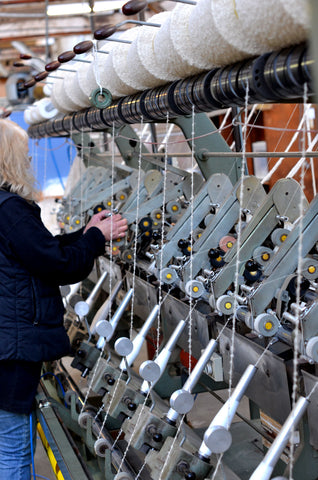

The actual weaving (once we get to this part) is a mesmerising process that I could watch until the sun disappears from the sky, almost magic, thousands of tiny fingers clattering along to somehow just like a magic carpet of intricate weaving appears from this big machines. Once you have experienced the feeling you just want more, the possibilities are endless and this is what keeps me up at night.


If you haven’t already noticed I am a passionate member of the slow fashion movement (including home wares) my responsibility as part of this growing global movement is not just to follow the ethos of slow responsible production and make beautiful things but to educate you, YES you the consumer.
Can you honestly read this blog and not understand the value of responsible, Australian design?
Writer, blogger, designer, slow fashion advocate- Tamika Bannister
www.thespottedquoll.com.au
